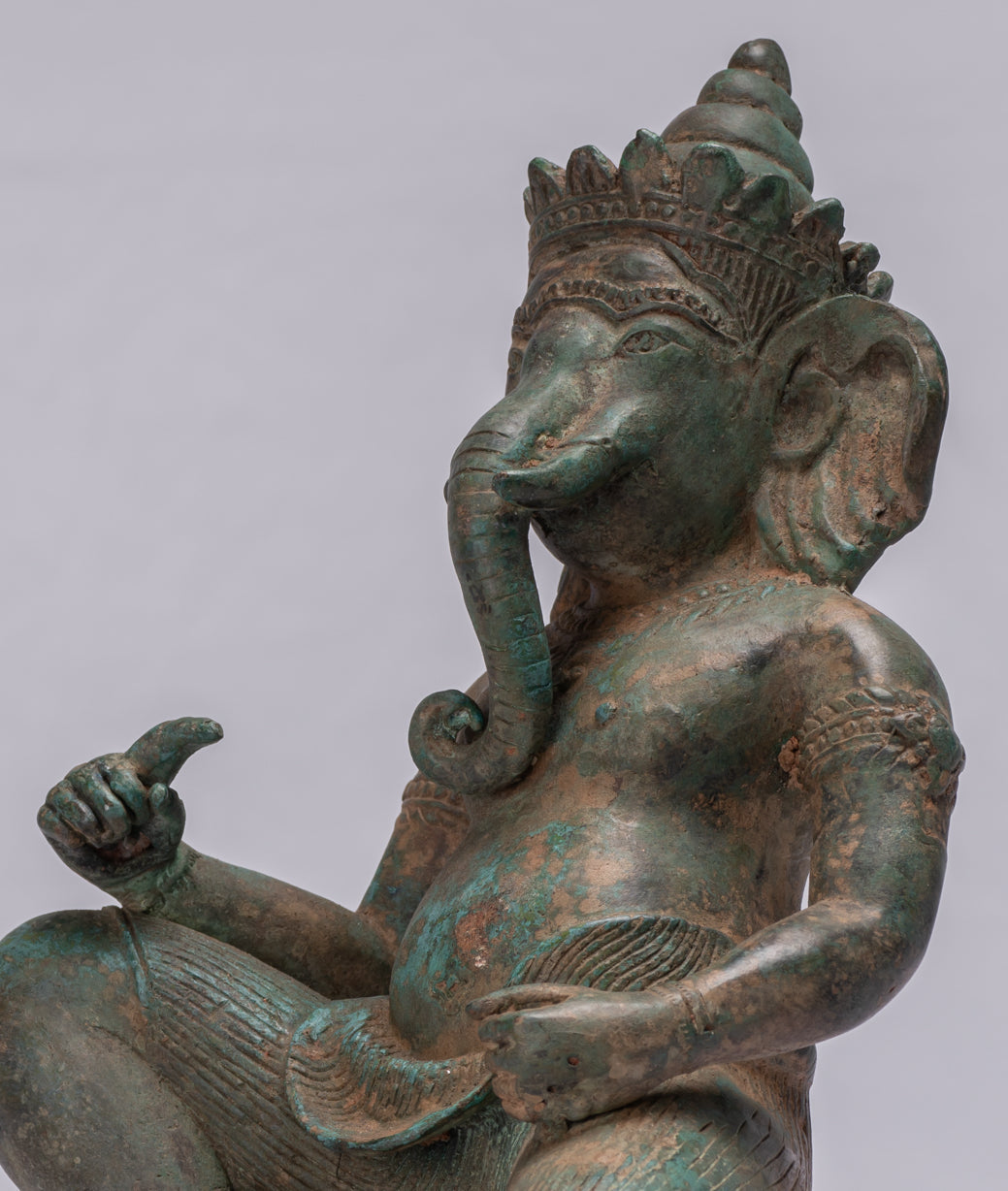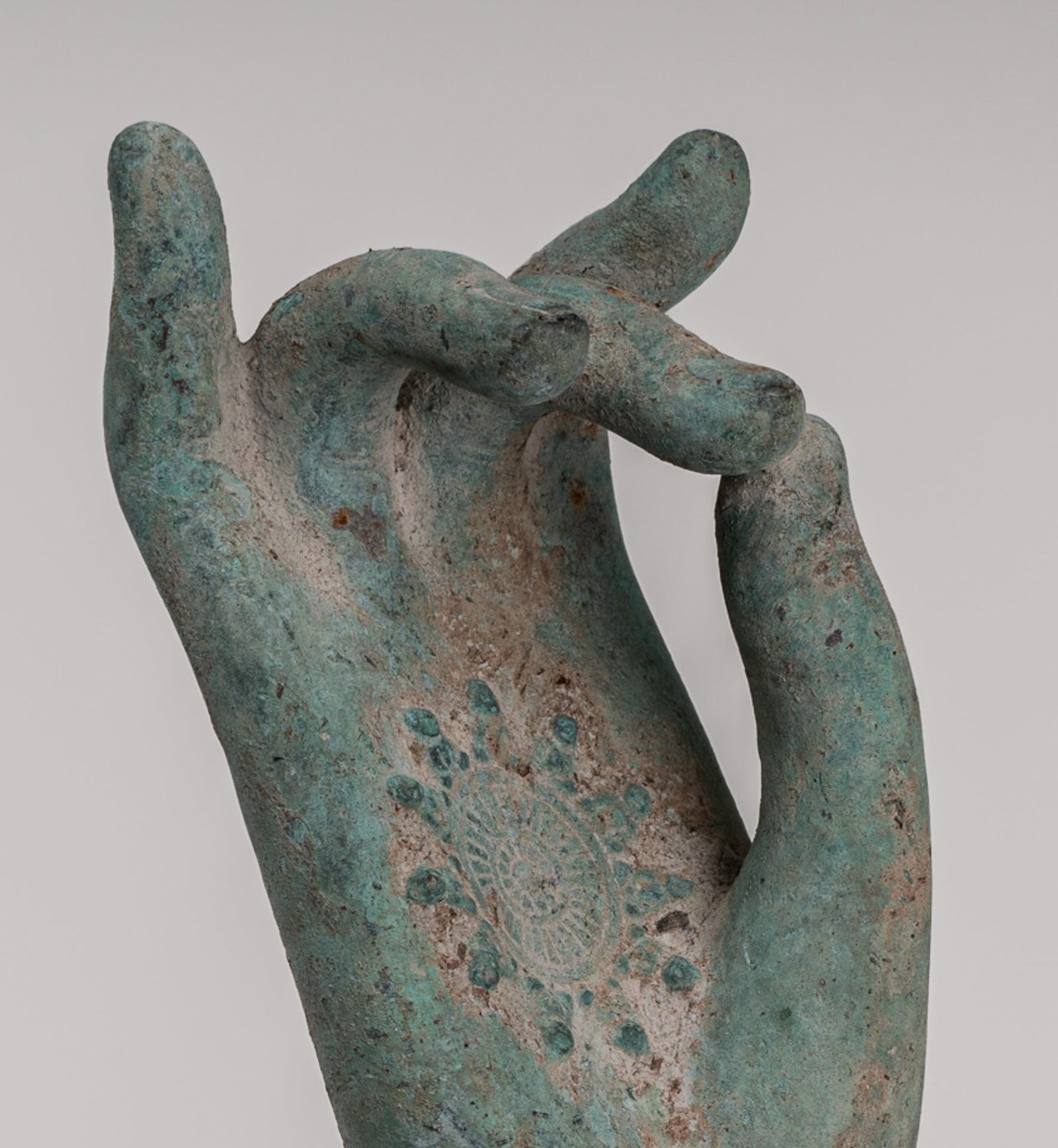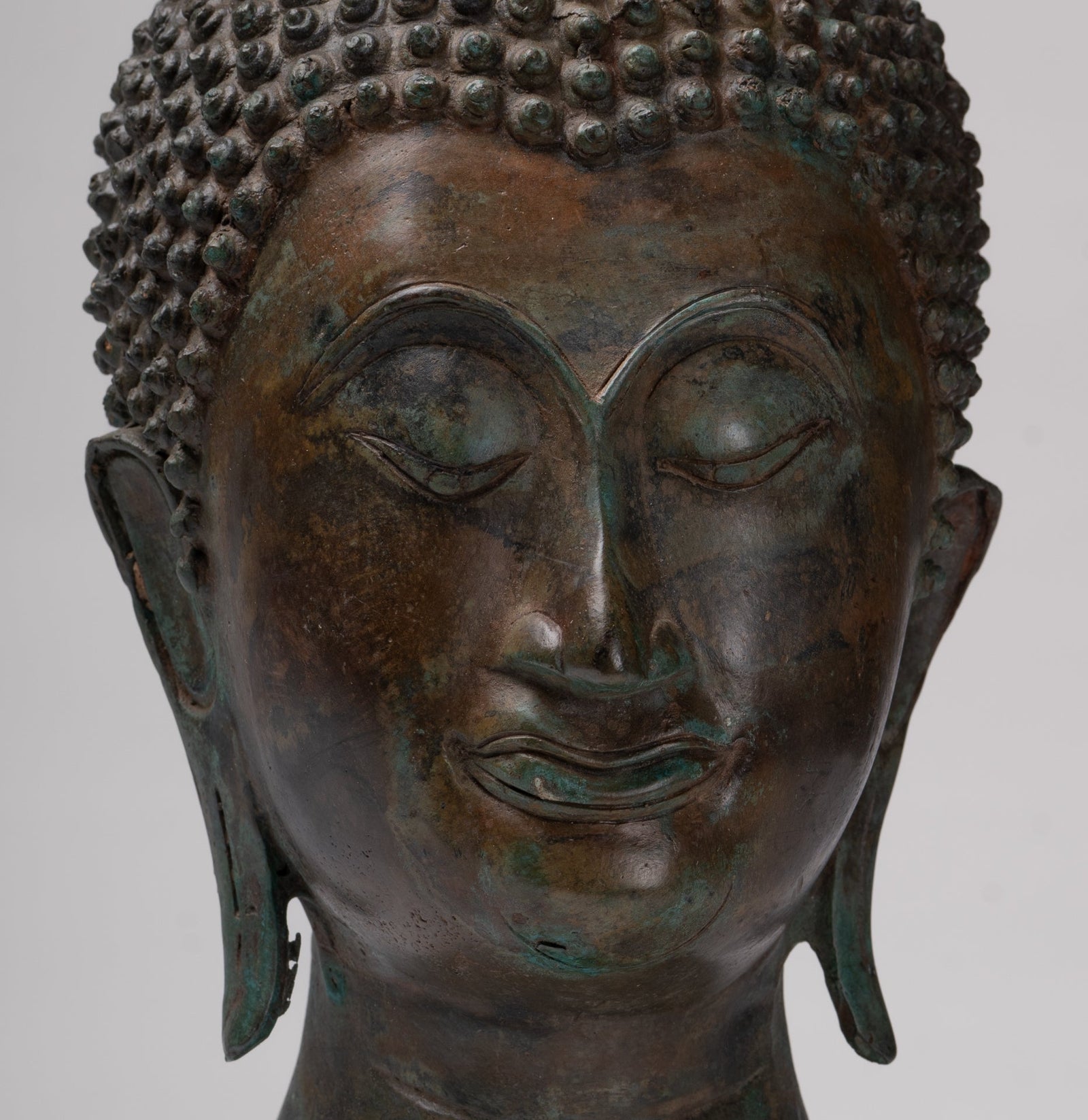-
Antique Java Style Majapahit Standing Bronze Kali or Mahakali Statue - 42cm/17"
Measurements Height 42cm/17"
An antique Java Style dancing bronze Kali or Mahakali sculpture in the 13th century Majapahit style.
In the rich tapestry of Hindu mythology, amidst a pantheon of deities each embodying unique virtues and powers, stands Kali—a figure of both awe and reverence. With her fierce countenance, adorned with a garland of skulls and wielding weapons, Kali cuts a striking figure. However, beyond her fearsome appearance lies a deeper symbolism and profound significance within Hindu spirituality.
The imagery of Kali is laden with symbolism, each aspect carrying profound meaning. Her dark complexion represents the eternal void from which all creation arises and into which all eventually merge—the primordial energy of the universe. Adorned with a garland of severed heads and wielding weapons, Kali symbolizes the annihilation of ego, ignorance, and negativity. Her wild and untamed appearance signifies the transcendence of societal norms and the embrace of one's true nature.
In her hands she holds a Trident, a sword, a lotus flower and a kalasha. She wears a richly bejewelled dohti and upavita. His face has a downcast gaze.
The kalasha is considered a symbol of abundance and "source of life" in the Vedas. It is referred to as "overflowing full vase" in the Vedas. The Kalasha is believed to contain amrita, the elixir of life, and thus is viewed as a symbol of abundance, wisdom, and immortality.
Upon her head she wears a decorative Javanese style tiara in front of her Kirita-Makuta or tall conical crown. This symbolises control over Positive and Negative attitudes. On her foreheads she has a third eye or urna.
She has an aquiline nose and elongated earlobes with large ear rings. An aureole behind her head symbolizes her divinity.
Here, Kali is posed in her cosmic dance—the Tandava—wherein she simultaneously creates and destroys. This dance represents the cyclical nature of existence, where death is not an end but a transformation into new life. Kali's destructive aspect is not merely about annihilation but also about clearing the path for renewal and regeneration.
Embracing Kali's Teachings: While Kali's fierce form may evoke fear and awe, her essence is one of compassion and liberation. By confronting our fears and embracing the transformative power of destruction, we pave the way for spiritual growth and enlightenment. Kali teaches us to confront the darkness within and without, leading us towards inner strength, resilience, and ultimate liberation from suffering.
By embracing Kali's teachings, we unlock the transformative potential within ourselves, leading us towards greater understanding, compassion, and enlightenment.
The sculpture has a wonderful verdigris patina.
SATISFACTION GUARANTEE - We have been offering SE Asian Art for many years and are proud of the reputation we have developed for fair and honest listings. However, if for any reason, whatsoever, you are unhappy with your purchase please just let us know and we will provide a full refund. We want you to be 100% happy with your purchase.
-
The majority of orders will be shipped with DHL. This is a secure, express and fully tracked service.
Items less than 2Kg we typically ship using Royal Mail.
Once we receive your order we try to ship all orders the same or next working day.
Large and/or fragile pieces requiring palletising, specialist crating and/or extra packaging may take a little longer. Palletised shipments will be delivered curbside.
All orders over 35 GBP will be shipped free of charge.

-
We genuinely hope that all purchases delight.
However, if they do not, regardless of reason, we will refund all orders upon receipt of the unwanted item. Just notify us within 14 days of receiving your order that you wish to make a return and send the piece back to us with 30 days of delivery.
Let Us Help You Find The Piece You Desire
What Our Customers Think
Hello! Thank you very much! The three Ganesha have just arrived. They are very beautiful and joyous :).
Christina, Bucahrest, Romania
We have well received the statue of Aspara and the two guardians… And we are happy to possess such a lovely pieces! Thanks for all.
Christian, Neuchâtel, Switzerland
l have received the Buddha Head. lt is a lovely piece .... thank you very much.
Hugo, Zurich, Switzerland






























































